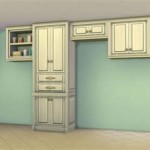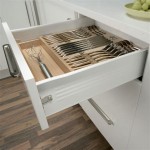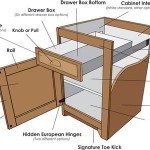How To Install Stacked Crown Molding On Kitchen Cabinets
Stacked crown molding adds a touch of elegance and sophistication to kitchen cabinets, elevating the overall aesthetic of the space. This architectural detail creates a visual interest, enhancing the design and adding depth to the cabinetry. Installing stacked crown molding requires careful planning and precision, but the process is achievable for DIY enthusiasts with a basic understanding of woodworking and carpentry.
This guide outlines the steps involved in installing stacked crown molding on kitchen cabinets, providing detailed instructions and tips for a successful project. From preparing the cabinets to finishing touches, this comprehensive guide equips you with the knowledge and techniques to achieve a professional finish.
Preparing the Cabinets
Before embarking on the installation process, ensuring the cabinets are properly prepared is crucial. This involves cleaning the surfaces and making any necessary adjustments to ensure a smooth and even installation. Here's a step-by-step process:
- Clean the Cabinets: Thoroughly clean the top of the cabinets with a damp cloth to remove dust, dirt, and grease. Ensure the surfaces are completely dry before proceeding.
- Check for Level: Use a level to verify the horizontality of the cabinet tops. If there are any inconsistencies, consider adjusting the cabinet heights or using shims to create a level surface.
- Measure and Mark: Measure the length of each cabinet and mark the points where the crown molding will be installed. Ensure these marks are accurate to avoid gaps or inconsistencies.
Installing the Crown Molding
Installing stacked crown molding requires a precise approach, ensuring each piece is securely attached and aligns perfectly with the others. The following steps outline the process:
- Cut the Molding: Using a miter saw or a hand saw, cut the pieces of molding to the desired lengths, taking into account the angles required for the corners. Remember to make precise cuts, as any inaccuracies can lead to gaps or misalignments.
- Secure the First Layer: Apply a bead of construction adhesive to the back of the first layer of molding. This adheres firmly to the cabinet top. Nail the molding in place using finish nails, carefully countersinking the nails and concealing the holes with wood filler.
- Install Additional Layers: Repeat the adhesive and nailing process for each subsequent layer of molding. Ensure each layer is properly aligned with the previous layer, creating a seamless and visually appealing stacked effect.
Finishing Touches
Once the crown molding is installed, it's crucial to attend to the finishing touches to ensure a smooth and professional look. This involves sanding, filling gaps, and painting or staining the molding to match the existing cabinetry. Follow these steps for a perfect finish:
- Sand the Molding: Using fine-grit sandpaper, carefully sand the molding to remove any rough edges or imperfections. This creates a smooth surface that is ready for painting or staining.
- Fill Gaps: Using wood filler, fill any gaps or nail holes created during the installation process. Allow the filler to dry completely before sanding it flush with the molding surface.
- Paint or Stain: Choose the appropriate paint or stain to match the existing cabinetry. Apply the finish in thin, even coats, allowing each coat to dry thoroughly before applying the next.
Tips for Success
Installing crown molding requires attention to detail and meticulous execution. Follow these tips to increase the likelihood of a successful project:
- Use a Miter Saw: Invest in a miter saw for precise 45-degree cuts, ensuring the molding joins seamlessly at the corners. This tool significantly improves the accuracy and quality of the installation.
- Pre-drill Nail Holes: Before driving finish nails into the molding, pre-drill pilot holes to prevent splitting the wood. This ensures a cleaner and more professional finish.
- Practice on Scrap Wood: Before working on the actual molding, practice cutting and joining pieces on scrap wood to familiarize yourself with the process and ensure proper technique.

The Kitchen Cabinets One Room Challenge Week 3

Diy Stacked Kitchen Cabinets Frills And Drills

Faq Crown Molding For Cabinets Dura Supreme Cabinetry

Diy Stacked Kitchen Cabinets Frills And Drills

Installing Crown Molding On Kitchen Cabinets Diy Cabinet

How To Install Crown Molding On Kitchen Cabinets Sawdust Girl

Diy Stacked Kitchen Cabinets Frills And Drills

How To Add Crown Molding Kitchen Cabinets Abby Organizes

Diy Stacked Kitchen Cabinets Frills And Drills

Stacked Crown Moulding Decora Cabinetry Kitchen Cabinets Trim Cabinet Molding
Related Posts








